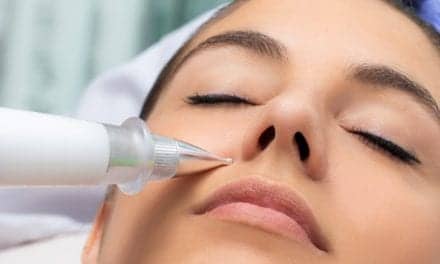San Francisco
October 6—11, 2006
 One of the highlights of the American Society of Plastic Surgeons’ annual meeting in San Francisco last month was “Hot Topics in Plastic Surgery,” a forum for the discussion of new and controversial clinical and business practices. More than 20 topics were presented; PSP reviews four of them here.
One of the highlights of the American Society of Plastic Surgeons’ annual meeting in San Francisco last month was “Hot Topics in Plastic Surgery,” a forum for the discussion of new and controversial clinical and business practices. More than 20 topics were presented; PSP reviews four of them here.
Fast Facelifts
Steven Teitelbaum, MD, FACS, of Santa Monica, Calif, reviewed the facelift terms being bandied about these days, including the “Mesolift,” “Lifestyle Lift®,” “Quicklift®,” “weekend facelift,” and “instant-recovery lift.” Teitelbaum says that even though these procedures are gaining rapid popularity because they claim to require little or no patient downtime, none of them are truly facelifts.
• The Mesolift, which was invented by a otolaryngologist, is purported to slow down the aging process with no surgery and no downtime—and this is not a facelift. According to Teitelbaum, “It is Mesotherapy of the face.” According to its Web site (www.mesolift.co.uk), it improves tonicity, elasticity, and appearance, resulting in a clear complexion. It is usually performed in an initial series of two to four treatments spaced 2 to 3 weeks apart. The effects of Mesolift treatments are cumulative; the body develops collagen and elastin over time.
• The Lifestyle Lift, also invented by an otolaryngologist, removes excess fat and tightens droopy muscles and skin of the face and neck. Physicians say that it is a variation of the traditional S-lift. The Lifestyle Lift is performed while the patient is conscious, under local anesthesia, and only in clinics that are run by the company that owns the Lifestyle Lift trademark. The procedure promises immediate results with minimal bruising and swelling.
• The Quicklift, developed by Dominic Brandy, MD, is another modification of the traditional S-lift. The Quicklift provides an overall lift to the lower region of the face and the upper neck with quicker recovery, smaller incisions, a lower risk of complications, and immediate results. The procedure, also called the weekend facelift, is designed for men and women ages 40 and older who want to turn back the aging clock.
“Basically, all of these procedures are S-lifts, which were created 40 years ago,” says Joe Gryskiewicz, MD, FACS, of Burnsville, Minn. “It involves an S-shaped incision around the front of the ear. There is limited local undermining, and a little bit of skin is cut. Some surgeons also liposuction the neck as part of the procedure, now that liposuction is available. I do not have direct experience with the S-lift, but the results from a facelift last about 7 years, some say, so the limited results from the S-lift would be the same. Patients find these lifts worthwhile, but very, very limited.”
Absorbable Staples
Another topic presented by Teitelbaum was the Insorb Subcuticular Skin Stapler® produced by Incisive Surgical of Plymouth, Minn, which combines the aesthetic result of absorbable sutures with the rapid closure times of metal skin staplers. According to Teitelbaum, Insorb eliminates the need for metal staple removals postoperatively.
The staple is composed of a poly (lactic acid)—poly (glycolic acid) copolymer. Initial studies suggest that this copolymer is tissue-friendly. The staple is placed through the tissue path created by two surgically sharpened needles and securely fastens the approximated edges of tissue. It degrades via hydrolysis and is gradually absorbed by the body over a period of months. Its design features a proprietary polymeric U-shaped staple with cleats.
The proprietary incisive closure technology replicates the familiar technique and method surgeons use to close incisions with metal skin staples. It allows surgeons to time-effectively place an interrupted stitch (an absorbable staple) to provide a symmetrical, everted closure.
Low-Power Laser
Neal Reisman, MD, JD, of Houston presented the topic, “Lasers That Stimulate Hair Growth.” In his presentation, Reisman spoke about Revage 670™, a low-power laser by Apira Science of Newport Beach, Calif.
According to Reisman, the US Food and Drug Administration (FDA) considers low-power lasers nonmedical devices and views them akin to microdermabrasion, a noninvasive procedure.
“The FDA classifies laser and other electronic equipment according to the device’s energy output, danger to human life, and most importantly, to the indication the marketing entity seeks,” Reisman says. “For example, a laser pointer is used for pointing out objects for the human eye to view. It is not marketed for any medical indication, such as disease or anomaly. If XYZ company wanted to claim a vision-correction indication for myopia, XYZ company would need an FDA clearance for the laser pointer, which we all know cannot harm any living creature.”
Reisman says low-power lasers are classified by the International Electrical Energy Commission based on their laser-energy output. Some classes are IIIa, IIIb, and IV, to name a few. All class IV lasers must receive an FDA clearance because they are thermal devices and represent potential harm to the human body. Laser hair removal and other procedures use thermal devices. The class IIIa low-level laser therapy devices are nonthermal and therefore may be marketed as nonmedical devices unless the manufacturer wishes to make a medical claim.
Reisman says that Apira Science hopes to make a medical claim for the low-power laser. The company is conducting two clinical trials; both will conclude in mid-2007.
Milder CO2 Laser
Barry DiBernardo, MD, FACS, of Montclair, NJ, presented “Quick-Recovery CO2 Lasers.” In his presentation, DiBernardo discussed the CO2 laser offered by Lumenis Inc of Santa Clara, Calif. The laser works only in the epidermis and upper dermis; it produces ablation and heat, which promote collagen growth. With this laser, spot size is reduced and the spots do not overlap. Its software provides nonsequential scanning so that heat does not build up too much in one location. Patient downtime is 5 days.


